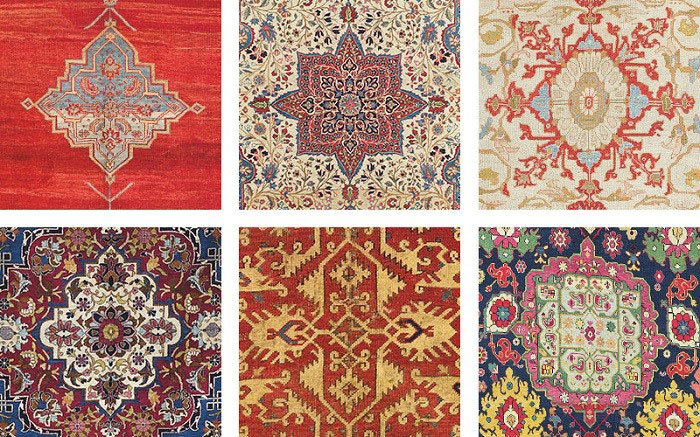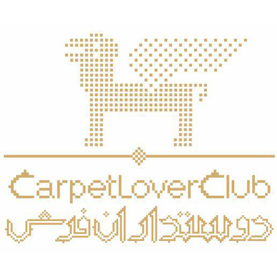What is an Oriental Rug?
All Persian rugs are considered Oriental rugs, but not all Oriental rugs are considered Persian rugs. An Oriental rug is a rug crafted in any of the “Oriental” countries other than Iran
THIS INCLUDES:
- Pakistan
- Turkey
- Afghanistan
- India,
- China,
- Uzbekistan
- and a few others.
Before the Persian practice spread, a rug made in Persia was often said to be superior to any other rug crafted in the Orient. However! The secret of the Persian Knot has spread throughout to rug artisans all over the world. And the key to a Persian rug lies with its knot style, not the country it was crafted in.
ORIENTAL VS. PERSIAN RUGS WHAT’S THE DIFFERENCE?
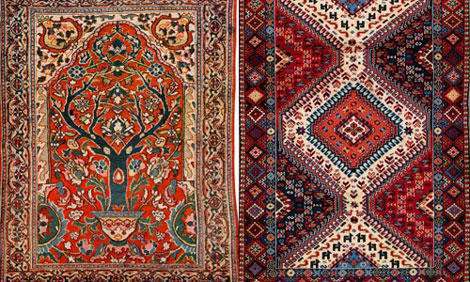
Most antique hand woven rugs are either referred to as either Persian or Oriental rugs. Often Persian and oriental rugs are used interchangeably but have you ever wondered what exactly the difference between the two is? These hand woven rugs have their own history with ancient and intricate designs, natural wool fibers, durability and extensive workmanship making them most valuable and highly sought after around the world. Most carpets crafted in Asia or the Middle East, including China, India, Egypt, Afghanistan, Pakistan and Iran, was considered oriental. Well, when Persian Empire was at its peak, Persian rugs were most popular among European consumers. Since Persian carpets were technically also oriental, the two terms became confused and started being used interchangeably. However there are some subtle differences between Oriental and Persian rugs. All Persian rugs are oriental rugs but not all oriental rugs are Persian rugs. Here are few ways Oriental and Persian rugs differ from one another.
Country of origin
Country or origin and location can be one of the major differences for these two distinctive styles of rugs. Hand woven rugs crafted in Oriental countries like China, Turkey, Tibet, India, Pakistan, Iran and Egypt are referred to as Oriental rugs. Any carpet that has been crafted in oriental countries other than Iran can be called as Oriental rug. Persian rugs are technically oriental rugs that are manufactured in Middle East specifically Iran which was formerly known as Persia.
Knots counts
Another difference is the way rugs are knotted together. True oriental and Persian rugs are hand knotted on looms. Oriental rugs are tied with a symmetrical Ghiordes knot. Persian rugs are most often hand knotted using an asymmetrical or Senneh knot. Persian rugs are usually considered the highest quality oriental rugs in the world and feature high knot counts.
Designs and pattern
Now-a-days, Persian and Oriental refer to the style, technique and design of the rug rather than the region where it was made. Persian rug designs are named after the tribe or city in which they were created. Tabriz , Hamadan , Heriz , Kashan , and Kerman are some of the most popular designs. Persian rug have unusually thick pile (up to 160 knots per square inch), extremely rich color combinations and unique designs like husks, pomegranates, jugs, crosses, combs. On the contrary, the designs of oriental rugs represent distinctive customs and traditions of the region they are produced in. for example silk rugs are a popular product of China characterized by traditional Buddhist motifs and palate of traditional colors.
Material
While there are some common materials used between the two distinctive styles of rugs. Persian rugs, depending on where it was produced and the artisan, are typically made from camel hair wool, kork wool (gained from wool growing on sheep’s neck which is higher grade of Persian wool) and Manchester wool and you can also find cotton iterations as well. Oriental carpets can be pile woven or flat woven without pile using materials such as silk, wool and cotton. Oriental rugs also tend to have higher concentrations of cotton being used in their threads essentially making them less valuable to collectors and more susceptible to damage or dye deterioration.
Hand washing
The ancient and traditional process of hand washing a rug creates a big difference between oriental and Persian rugs. One of the reasons that Persian rugs are thought to be the softest in the entire world is because they are traditionally hand washed.
key factors for buying persian handmade carpet
Every city in Iran has a unique handicraft which makes for a memorable souvenir, but scoring the perfect Persian carpet is the ultimate prize. It’s easy to become overwhelmed, though, with so many types and patterns (not to mention the prices). Here is tips for finding the perfect Persian carpet.
The knot count
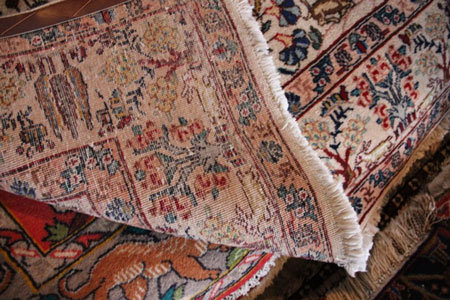
Traditional Persian carpets are handwoven on a loom, so one of the most important features to look out for is the knot count. A quality rug will have at least 120 knots per square inch. To at least feign the appearance of a carpet connoisseur in front of the seller, flip it over and look at the knots from the underside. You’re not expected to count them, but the back of a carpet has much to say. A handmade one will have a soft backing with a few bigger knots, a clear testimony to being woven by hand, whereas a machine-made one will raise an eyebrow due to its knot uniformity.
The material

Handwoven Persian carpets are typically made of wool, silk, or a wool-silk blend. The 100% pure silk rugs are quite fine and have a shiny finish. Wool, on the other hand, is the most commonly used material. The quality depends on the breed of sheep, the climate, pasturage, and time of shearing. Don’t mistake these two quality flame-resistant materials for the synthetic fibers of machine-made carpets, which are highly flammable and tend to give off lint.
The color

Traditional Persian carpets are made from natural dyes so you want to look for colors that seem to come from nature: cochineal insects for reds, the indigo plant for blues, and pomegranate rind for shades of yellow. Synthetic dyes tend to penetrate the fiber evenly, whereas natural dyes will coat the surface. Bend the carpet to isolate a few threads, and if you notice a subtle unevenness, then you know you’re dealing with natural colors.
Determine its use
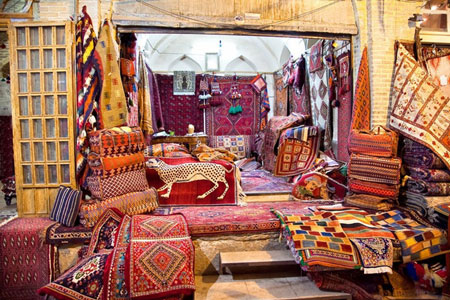
Think about where you want to place your carpet and what you’ll use it for. Although they may be the ultimate luxury item, silk rugs are less resistant to stress and therefore serve more decorative purposes, such as being hung on the wall. Wool rugs are more practical, incredibly durable, and can handle a high volume of foot traffic for decades (even centuries) without showing signs of distress. And for those who have young children, they are excellent at disguising any spills or mishaps!
Know the difference between types

Not all Persian carpets are created equal, and it’s not unusual for novices to mistake a gelim(a flat woven carpet) or a gabbeh (a pile rug commonly woven by nomads) for a “traditional” Persian carpet just because it’s from Iran. These varieties are beautiful in their own right, but be sure you know the difference so that you don’t invest in the wrong one.
